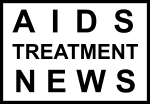"CDC Guidance on ART and its Effect on Sexual Transmission of HIV
"* Use of ART may be a promising tool for slowing the transmission of HIV within populations if prevention benefits are not offset by increases in risk behavior. Success of such a program will depend critically upon 1) widespread testing and early identification of infected persons, 2) ongoing counseling to support maintenance of safer sexual behaviors, 3) adequate clinical follow-up to monitor for adverse effects of ART, and 4) geographic and financial accessibility of treatment for affected persons.
* In accordance with U.S. Department of Health and Human Services guidelines, clinicians may consider the potential benefit of decreased risk of HIV transmission to others in deciding whether to initiate ART in infected patients (even at CD4 counts of >350 cells/μL).
* The risk of sexual HIV transmission is substantially reduced for individual couples in which the infected partner is on effective ART and has achieved undetectable plasma HIV viral load, but is not completely eliminated. Sexual transmission of HIV may still occur when the infected partner is on effective ART. In February 2008, CDC issued a statement reiterating its previous recommendations that people living with HIV who are sexually active use condoms consistently and correctly with all sexual partners.
* For couples in which both partners are infected, the potential implications of superinfection are unclear. Use of condoms is recommended in this setting as well."
Read more in U.S. Centers for Disease Control and Prevention, August 2009.

0 comments:
Post a Comment